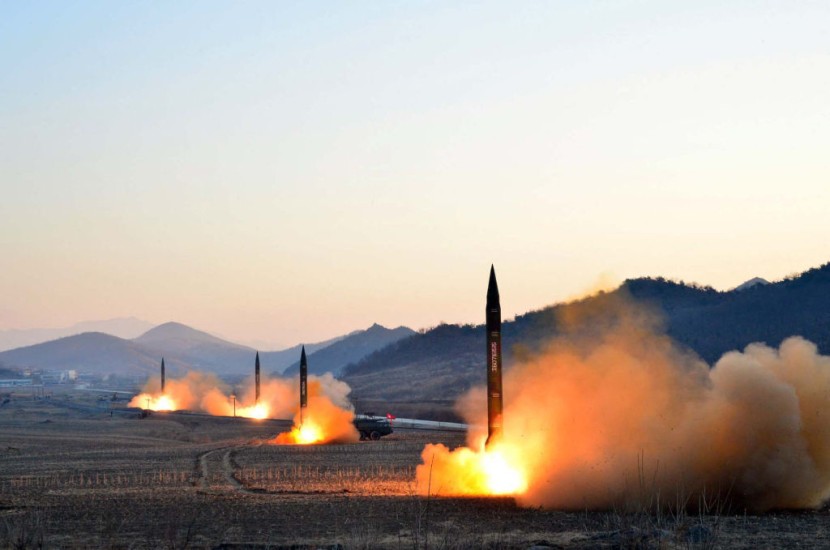
Amidst the ongoing Ukraine-Russia war, the Biden administration is reportedly on the verge of deciding to send cluster bomb-laden long-range missiles to Ukraine.
The move aims to equip Kyiv with the means to inflict significant harm deeper within Russian-occupied territory.
US Nears Approval of Cluster Bomb-Equipped Missiles for Ukraine in Escalating Conflict
This decision follows the demonstrated effectiveness of cluster munitions delivered by 155 mm artillery projectiles over the past few months
Army Tactical Missile Systems (ATACMS) with a remarkable range of up to 190 miles (306 km) and Guided Multiple Launch Rocket System (GMLRS) missiles with a 45-mile range and cluster bombs are among the prospective shipments under consideration.
Although these options are still subject to sanction, they are ready to be rapidly dispatched to Kyiv if given the go-ahead, as per The Hill. Ukraine currently uses 155 mm artillery with a maximum range of 18 miles, capable of transporting up to 48 bomblets.
The under-consideration ATACMS could disperse 300 or more bomblets, and the GMLRS rocket system could disperse up to 404 cluster munitions. Recent gains made by Ukrainian forces against Russian personnel have influenced the administration of President Joe Biden.
The administration regards this time as crucial for bolstering the Ukrainian military as Ukraine continues its offensive against Russian forces. However, the White House has remained silent on this alleged development.
The decision to send ATACMS, GMLRS, or both is still being determined and may be modified. The administration has hesitated to send ATACMS out of concern that it could be interpreted as a provocative move against Russia.
These long-range missiles are designed for deep attacks of enemy second-echelon forces. They could target command and control centers, air defenses, and logistical sites located well behind the front lines.
Ukraine has repeatedly asked the United States for ATACMS to disrupt supply lines, air bases, and transport networks in Russian-occupied territory. Recently, Ukrainian Foreign Minister Dmytro Kuleba disclosed that he and Secretary of State Antony Blinken have discussed the potential supply of long-range missiles, according to Reuters.
The timely deployment of ATACMS or GMLRS with such capabilities could give the Ukrainian military a morale lift and a tactical advantage, given that Ukrainian forces are attempting to breach Russian lines and endanger main supply lines.
According to anonymous sources with knowledge of the matter, the plan is to include these cluster munition-packed missiles in an impending draw from US munitions stockpiles.
Ukraine has only one variety of cluster munitions supplied by the United States, the 155 mm rounds announced in July. These new weapons would supplement Ukraine's 45-mile-range GMLRS rounds, which discharge over one hundred thousand sharp tungsten fragments but no bomblets.
Lockheed Martin produces ATACMS in several variants, some of which have four times the range of GMLRS. Their deployment could alter the battlefield's dynamics.
The Presidential Drawdown Authority (PDA), which enables the rapid transfer of armaments from US stockpiles to Ukraine, has proved to be the quickest method, delivering essential equipment within days or weeks.
In the interim, before the probable arrival of ATACMS, launchers, such as the M270 and High Mobility Artillery Rocket Systems (HIMARS), that Ukraine has been employing in combat, could receive the necessary software upgrades.
Read Also : Russian Missile Strikes Two Foreign Aid Workers in Eastern Ukraine Amidst Overnight Drone Barage
Doubt Lingers Over Cluster Bomb-Equipped Missile Inclusion in Upcoming PDA
However, the ultimate decision regarding including these weapons in the upcoming PDA remains indeterminate. If approved, they could be included in a PDA as soon as this week, coinciding with a meeting of the Ukraine Defense Contact Group at Ramstein Air Base in Germany on September 19.
President Joe Biden may ultimately decide to defer or reconsider the decision. Over one hundred countries have banned cluster munitions. Still, Russia, Ukraine, and the United States have not signed the Convention on Cluster Munitions, which prohibits their production, stockpiling, use, and transmission.
Typically, these munitions disperse numerous smaller bomblets that pose a threat decades after a conflict has ended, as those that fail to detonate can murder indiscriminately over a large area.
Since Russia's full-scale invasion of Ukraine in February 2022, the United States has committed more than $40 billion in military assistance to Kiev. The Chairman of the Joint Chiefs of Staff, General Mark Milley, has observed that Ukrainian troops are making steady progress in their counteroffensive against Russia.
Still, the window of opportunity for achieving critical objectives is narrowing due to the impending storm.
According to CNN, some military experts said Ukraine can continue to advance despite adverse weather conditions if it receive a constant supply of weapons, equipment, and collections. The director of Ukraine's military intelligence, Lieutenant General Kyrylo Budanov, has reaffirmed Ukraine's commitment to its operation, stating that the offensive will continue despite the wet and cold weather.
The June-launched counteroffensive has encountered difficulties in eastern Ukraine, where Russian troops are entrenched behind minefields, trenches, and anti-tank obstacles.
Ukraine's President Volodymyr Zelensky has expressed frustration, stating that his country waited too long to begin the counteroffensive, implying that Western allies delayed the operation by delaying the delivery of weapons.
The outcome of these prospective shipments of longer-range missiles to Ukraine could substantially affect the ongoing conflict in the region.









